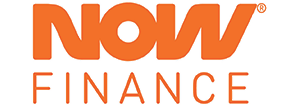
Healthcare expenses can be a complicated thing to get your head around. All Australian permanent residents, some of those on the path to permanent residency and those covered by a reciprocal health agreement with another country are eligible for Medicare. This means for certain healthcare expenses, the government will pay up to a certain amount for you, according to the Medicare Benefits Schedule. Private health insurance is supposed to fill in the gaps, but few policies are completely comprehensive.
Can you get a loan for medical expenses?
A medical loan is a type of personal loan specifically designed to cover medical expenses. Medical loans can be for elective surgeries, dental procedures, and hospital stays, among other things. If there’s a sizeable gap between what Medicare and your private health cover will pay for and the overall cost of a bill, a medical loan could make up the difference.
Some loan products are specialised for medical expenses, like Australian Credit Acceptance (ACA) for example, which offers finance specifically for cosmetic surgery and other medical purposes. In other cases, a ‘medical loan’ is just a normal unsecured personal loan where the money gets used for medical purposes.
| Lender | Car Loan | Interest Rate | Comparison Rate* | Monthly Repayment | Interest Type | Secured Type | Early Exit Fee | Ongoing Fee | Upfront Fee | Total Repayment | Early Repayment | Instant Approval | Online Application | Tags | Features | Link | Compare | Promoted Product | Disclosure |
|---|---|---|---|---|---|---|---|---|---|---|---|---|---|---|---|---|---|---|---|
5.76% p.a. | 5.76% p.a. | $384 | Fixed | Unsecured | $0 | $0 | $275 | $23,066 |
| Promoted | Disclosure | ||||||||
5.95% p.a. | 5.95% p.a. | $386 | Fixed | Unsecured | – | $0 | $0 | $23,171 |
| Promoted | Disclosure | ||||||||
5.95% p.a. | 5.95% p.a. | $386 | Fixed | Unsecured | $0 | $0 | $0 | $23,171 |
| Promoted | Disclosure | ||||||||
7.54% p.a. | 9.08% p.a. | $401 | Fixed | Unsecured | $0 | $0 | $595 | $24,068 |
What can a medical loan cover?
Medicare is intended to cover essential medical expenses. There is often a difference between what a healthcare provider charges and the Medicare Benefits schedule, leaving the patient with an out of pocket expense they might need a loan for.
For the most part though, medical loans are used for procedures or services not covered by Medicare or private health insurance, which tend to be elective procedures. The following are a few examples of expenses that might not be covered fully by either:
-
Plastic surgery like skin grafts after burns or surgery to get rid of loose skin after significant weight loss
-
Cosmetic surgery (cosmetic mole removal, breast enhancement, butt lift or other surgeries)
-
Laser eye surgery
-
Dental work (not covered under Medicare and might not be adequately covered under your private health policy)
-
IVF and other fertility treatments
-
Rehabilitation, perhaps for drug or alcohol addiction
-
Veterinary care for a pet: We often think of pets as our children but unfortunately they aren’t covered by the Medicare system designed for humans
Can I get a medical loan?
As with any credit product, you aren’t guaranteed to be approved for a medical loan. Most lenders will still do their due diligence on your creditworthiness and ability to repay the amount you have borrowed.
Who is eligible for a medical loan in Australia?
If you’re a citizen or permanent resident of Australia, you should have no problems applying for a personal loan. Getting approved is another thing.
Some lenders also offer loans for temporary residents, but there might be extra criteria for satisfy: Australian lenders might not have access to credit activity overseas for example, so borrowers need to demonstrate trustworthiness in other ways.
Lenders like Latitude Finance or ACA which offer loans specifically for medical expenses might have other questions beyond what a lender would normally need to know before writing a personal loan. You might need to provide information about what procedure you are having or service you intend to spend the money on.
It’s possible the funds might not be allowed to be used for your medical expense so you’ll want to check their categories beforehand.
Medical loans with a poor credit history
Having a history of unpaid bills and late debt repayments tends to complicate credit applications, but getting a personal loan with bad credit is still very possible in Australia. Short term smaller loans tend to have less stringent credit requirements, although normally also mean high interest rates and fees. The same applies for no credit check loans. If you are trying to bring down the rate of your medical loan, it might be worth offering something up as collateral.
Medical loans for self employed people
If you’re self employed, you’ll likely need to provide additional information about your company, like your ABN, financial statements or tax returns. It can be harder to get accepted for a loan if you’re self employed, particularly if you don’t have evidence of a regular income. If you have just transitioned to self employed work for example, you might not have the transaction history to reassure lenders of your business' viability. Some providers offer low doc loans, where applicants have to provide less information. Again though, these loans are seen as riskier, so usually come with higher rates and fees.
Who Offers Medical Loans in Australia?
Several financial institutions and lenders in Australia offer loans specifically for medical expenses. In other cases, you’re just taking out a normal personal loan, so have the vast majority of lenders in Australia to choose from.
Personal loan from traditional banks
Many major banks in Australia offer personal loans that could be used for medical expenses. NAB for example advertises its range of personal loans as suitable for medical purposes. The loan product is the same whether you’re borrowing for a knee replacement or two weeks in Tunisia, so the lower and upper limits as well as the fees are likely to be the same. However, most banks have a range of rates they charge depending on the customer, and how big the risk of default is.
Personal loans from Credit Unions or alternative lenders
Credit unions are customer owned financial institutions that often provide competitive interest rates on personal loans, including medical loans. You might also have some luck exploring alternative non bank lenders, who sometimes offer more flexible loan terms and a quicker approval process.
Medical loans
Companies like ACA or Latitude Finance offer products specifically called medical loans. However, its unlikely they will differentiate too substantially from the rates on other personal loan products. With ACA for example, the application process asks mostly for the same information regardless of if you’re getting a loan for farm equipment or a medical procedure. However, you could get in trouble if you were to use the money for something other than intended.
Direct payment plans
In some hospitals, you might be able to use a payment plan. This would cut out the middle man, the lender, since it’s a direct finance arrangement between you and the hospital. However the loan is often underwritten by a finance provider.
Some health care providers have partnerships with BNPL providers like ZIP, where interest is not usually charged, but account or late fees might apply.
How to compare medical loans
Once you’ve decided you need a loan to cover your medical expenses, you need to shop around and compare the products available. This ends up being quite similar to comparing personal loans, but there’s a couple of things more relevant when the loan is for medical costs
Fixed v Variable Interest Rate
As with most loans, you might have the choice between fixed and variable rate loans. Fixed rates are normally a bit higher than variable rates, but that’s because variable rates fluctuate with the RBA cash rate, so could go up, leaving you with a bigger interest bill.
Of course, variable rates can also go down, so if you have strong opinions about the macroeconomy and how you think upcoming monetary policy decisions are likely to go, this could inform whether you choose to fix your rates or not.
Secured v Unsecured Loan Type
Secured loans typically come with lower rates and fees. The flipside is though obviously if you default on your loan, your lender can repossess whatever you put forward as collateral.
Rates, fees and extra features
You should find a few options and compare the available rates. The advertised rate is the biggest determinant in how expensive your loan will be, so its important to shop around to see if you can find lower rates elsewhere.
You should also make sure you pay attention to the comparison rate, because this includes the other assorted fees and costs the loan will entail. A big difference between the comparison and advertised rates usually means there’s a lot of account keeping fees, so watch out for that.
It’s also worth having a look at the extra features the loan product offers. For example, if you can make unlimited extra repayments; this can make a big difference to how much interest you end up paying.
Speed of approval
Of particular concern if your procedure is urgent, you should also make sure you are not applying at a lender with too slow a turnaround time. You don’t want the day of your surgery to roll around with still no money in your account. A lot of lenders promise to process applications in a couple of days, but you’ll want to double check this won’t cause you any problems
How much you can borrow
Likewise, you might need to double check the lower and upper limit of your lender to see if you’ll be able to borrow the amount you need.
Alternatives to medical loans
There are definitely times when a medical loan is the best solution, but this won’t always be the case. If you can avoid an interest bill, it's likely to be better for your back pocket.
Interest free medical loans
Some healthcare providers partner with BNPL providers like ZIP to offer payment plans for medical expenses. Even without an official arrangement, your preferred BNPL might still allow you to use its services for medical bills. Going this route means you don’t pay interest, but there are still normally account keeping and late fees so keep this in mind.
Alternatively, you might qualify for an interest free loan from no interest loans schemes (NILS). Some organisations like Good Shepherd offer no interest loans for eligible applicants, normally those who earn below a certain threshold. There are normally a few criteria to satisfy, but if you do qualify, it doesn’t make much sense to borrow through the above lenders if you can get your hands on a no interest loan.
Medicare safety net
The Medicare safety net is a government service that can help lower out of pocket cost for out of hospital services. If you are registered for the Medicare safety nets, when you spend over a certain amount on medical bills in a calendar year, you end up with some of your money reimbursed. Everyone eligible for Medicare is eligible for the safety net, but you get extra benefits if you are a concession card holder or a family eligible for Family Tax Benefit Part A.
Credit card
Finally, if you have a credit card, you might decide to just stick your medical expenses on there. If you’re confident you can repay the amount back before your card bill is due, this is probably a good idea. If not, the interest rates on personal loans can be lower than those on credit cards, so you might be better off taking out a loan instead. Some providers offer medical credit cards, specifically for medical expenses, which might have lower rates.



